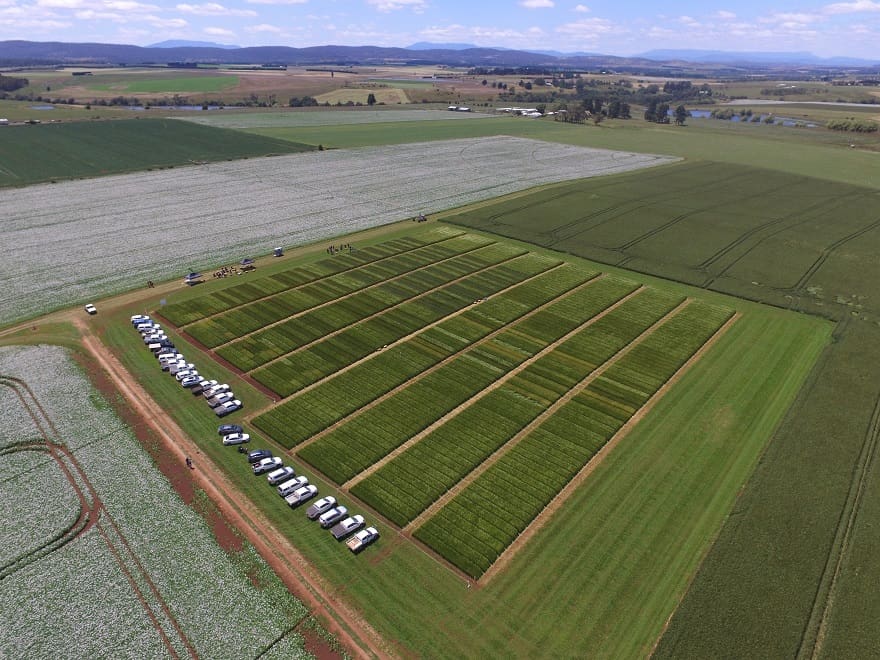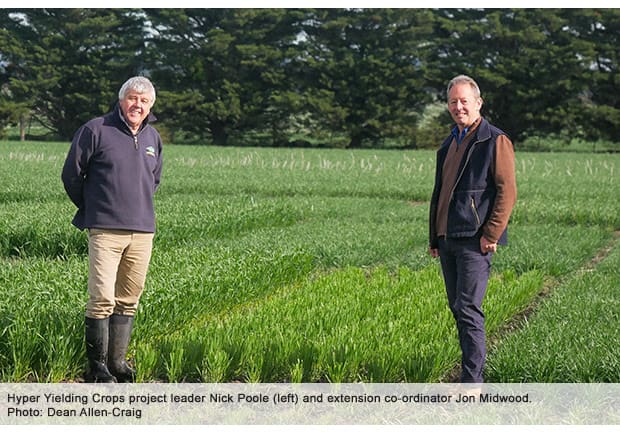
The Hyper Yielding Crops trial site at Hagley in northern Tasmania is aiming to push the productivity boundaries with spring-sown barley.
BARLEY sown in spring rather than the traditional time in autumn could have potential to fill a productivity niche in the cool-summer, high-yielding farming regions of Tasmania.
A trial is underway to test the potential of spring-sown barley to be grown as an economically viable crop under irrigation in the island state.
As part of the GRDC-funded national Hyper Yielding Crops (HYC) Project, the trial is in its first year with the first harvest due to be taken off in February.
Field Applied Research (FAR) Australia’s Nick Poole said the spring-sown barley trial was part of the national HYC project which aimed to push the economically achievable yield boundaries of wheat, barley and canola across the higher-yielding regions of southern Australia.
“It has been built on the former success of the Hyper Yielding Cereals project which was just a Tasmanian-based project,” he said.
“Broadly speaking, with the three crops of wheat, barley and canola, the barley trials conducted on the mainland are all autumn-sown, but the research emphasis in Tasmania is looking at spring-sown barley.
“It is the only region within the project that could sensibly and sustainably entertain spring-sown barley because the climate is cooler through the summer months and because it is irrigated in Tasmania.”
Mr Poole said researchers believed there was considerable potential for spring-sown barley to be a viable addition to irrigated cropping rotations in Tasmania.
“It has tended to be one of those crops that is just put in if everything else goes wrong, whereas what we are trying to do is to look at saying “Can this crop be grown, with attention to detail as to when you do things to it and with attention to detail to what germplasm is most suitable for spring sowing?”.
“Obviously autumn or winter germplasm wouldn’t be suitable.
“We are coming at it from the point of view of “Can we grow 10 tonnes/hectare of spring-sown barley reliably in Tasmania?”. “
Mr Poole said there were a number of benefits to growing spring-sown barley.
“It is cheaper to grow than autumn-sown barley. You tend to spend a lot less on herbicides in a spring-sown crop because you have a much longer fallow period if you are just growing cereals, or if you are growing an autumn-sown fodder crop for cattle it gives you the opportunity to control weeds in those fodder crops. It gives you a great opportunity to potentially control resistant grass weeds,” he said.
“It is also a crop that lends itself to needing a lot less fungicide.
“You need slightly less nutrition going into a spring-sown barley than an autumn-sown barley. So, the cash flow is better because you haven’t committed to so much expenditure early in the season.
“In Tasmania we have the opportunity to grow winter fodder crops for livestock and then effectively turn that land around and put spring-sown irrigated barley in. So, for those reasons we are looking to try to push the productivity boundaries with spring-sown barley.”
Grain Central: Get our free cropping news straight to your inbox – Click here


HAVE YOUR SAY